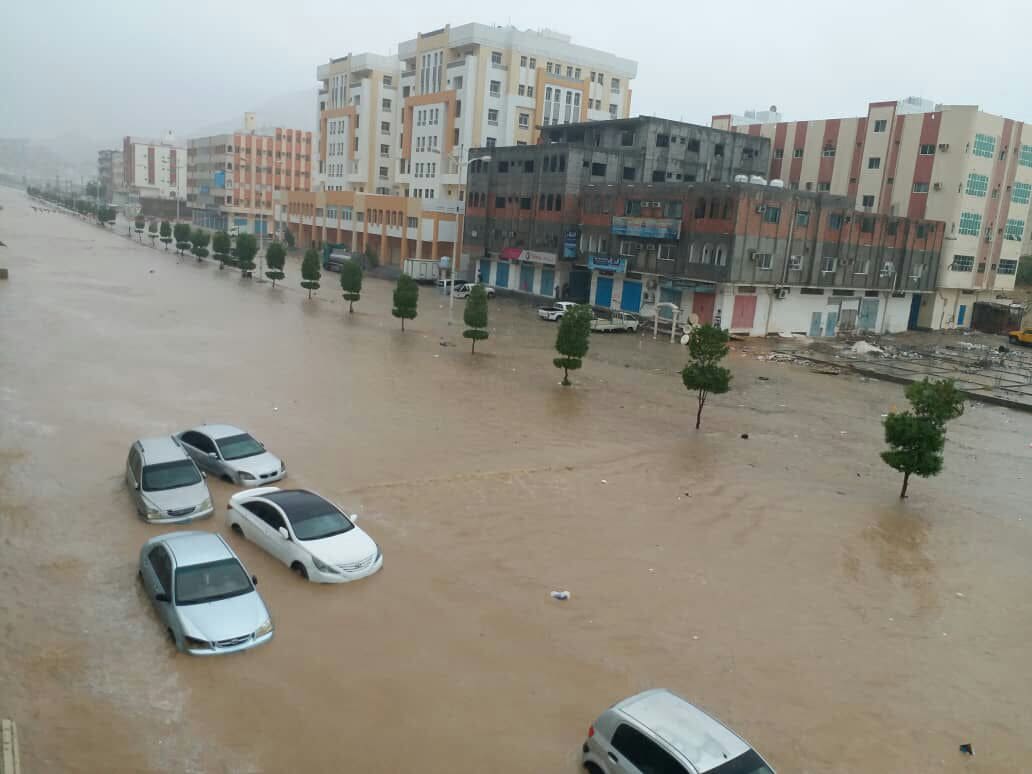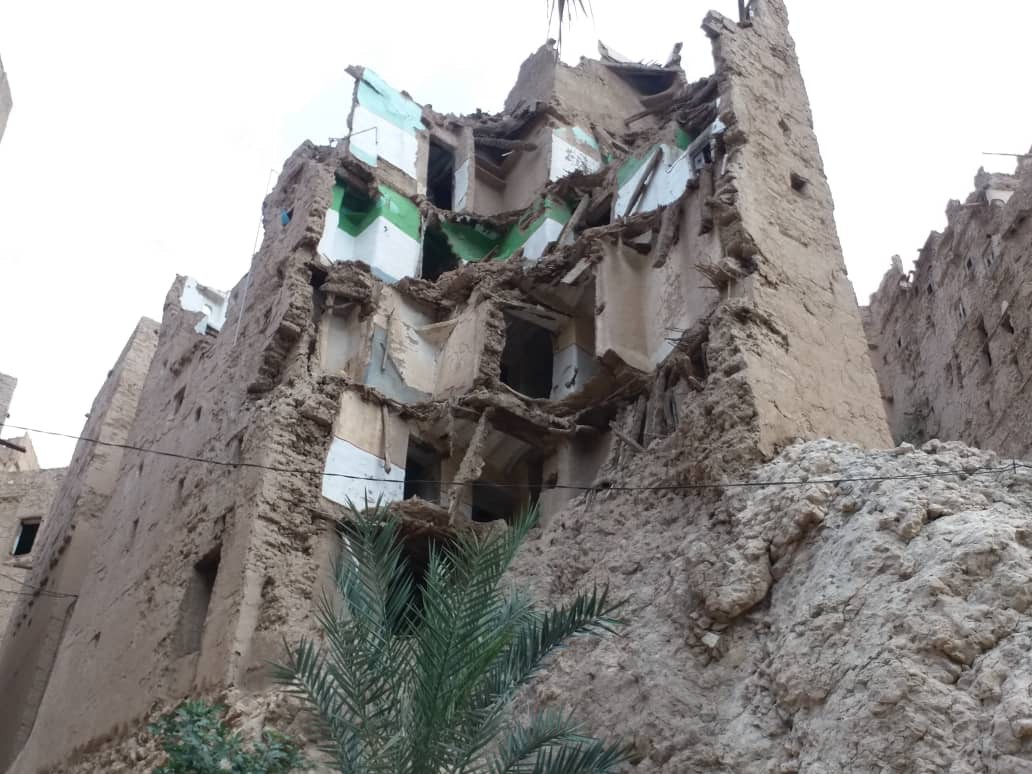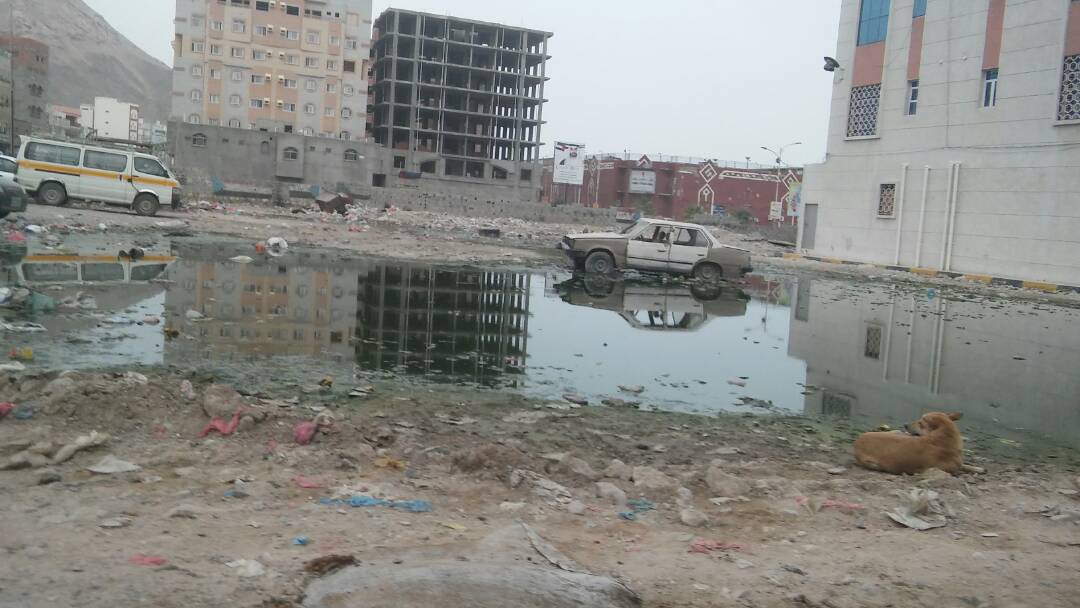
Floods swept away cars in the streets of Al-Mukalla (activists)
Last updated on: 02-07-2022 at 2 PM Aden Time

Abdullah Al-Shadli (South24)
Every year, the suffering is renewed in the Southern governorate of Hadramout as hundreds of Wadi Hadramout residents have been displaced since the heavy rains and the sweeping floods that hit the governorate in October 2008.
Despite the promises made by the successive governments, most affected individuals in Wadi Hadramout have not received the total compensations allotted to them. Some of them only received 20% of the overall amount.
Over the recent years, the governorate witnessed depressions and climate disturbances which caused sweeping torrents that damaged many of people's properties including houses and farms. There has been no clear governmental plan for compensation and for avoiding the recurrence of such disasters and damages.
The beginning of the disaster
In 2008, Hadramout was declared a disaster area after more than 1200 houses in Wadi Hadramout were damaged due to the floods. This led to the death dozens and a large number of livestock.
Historian Alwi Bin Samit recalled the details of the disaster caused by the torrents. He told "South24": "I made many appeals but the state didn't lift a finger in response. If it made even little preparations, the damages would not have touched this level".
He added: "The torrents swept away herds of livestock and no one knows their whereabouts. Over an entire century Wadi Hadramout didn't witness similar torrents".

A damaged house due to the rains in Wadi Hadramout, October 29th 2018 (Wael Al-Amari)
He added: "Wadi Hadramout witnessed heavy floods and rains in 1996 as well as a bigger one in 1989. This damaged many houses in Shibam and Tarim districts. Four victims were officially documented but statistics about the 2008 catastrophe pointed to a casualty number that exceeded 80 persons".
Fake support
A report, issued by the executive management of the "Reconstruction Fund for Affected Areas" in Hadramout and Al-Mahra after the rain and flood disaster from March 2009 to June 2013, said that the fund granted more than 29 billion Yemeni riyals to respond to the affected people. [1]
The report said that via “these payments, the fund was able to give compensations to about 20000 affected persons which represent 76% of the total compensations. Moreover, the fund achieved 226 projects which constitute 95% of the funded filter and refine valley gorges and infrastructure projects.
However, exclusive sources told "South24" that influential figures in the former central government were involved in fake projects which cost billions of riyals.
According to the sources, "these projects have not been achieved on the ground, and some of them were repeated more than once". The sources accused the Reconstruction Fund of "publishing exaggerated amounts of money which included huge mistakes".
They revealed that "the source of all the money in the fund came from donor and friend countries which deposited about 48 billion Yemeni riyals at this time". They added: "After the Houthis entered Sanaa and controlled it, only 18 billion riyals remained in the fund's account while 30 billion riyals went to the influential figures and were spent on fake projects.
Procrastination
Regarding the government's claims about compensating the floods' affected people in Hadramout, Tarim's former General Manager Khaled Howaidi told "South24" that "most citizens whose houses were damaged have not so far received compensation from the Yemeni government".
Howaidi added: "Many families became displaced people during the disaster. They lived in schools and education facilities. They have lived in tents for a long time" He indicated that "the number of damaged houses in Hadramout reached the level of 1200 while there were 800 damaged houses in Tarim District".
He said that “only 350 of 800 houses were restored while even one riyal has not been spent on other affected houses. Tens of farms in Tarim were completely damaged but their owners have not received compensation until now".
He added that "the compensations didn’t include most sectors apart from simple interventions in the agricultural sector. This was limited to the well- drilling projects. The affected rural areas included pharmacies and groceries. The majority of their owners are low income earners. However, their file has not been opened yet".
The former local official noted that they presented "a matrix that matched the central government stage at that time". He added: "There were instructions to give us one billion riyals annually. We were able to spend 5 million Yemeni riyals for 250 families. It was supposed to spend 40-60 million Yemeni riyals".
According to Howaidi, "20% of the compensation was delivered while the rest percentage is still lost".
Inaction and neglect
In many of Wadi Hadramout areas, the rains formed swamps that stirred the farmers' feelings of resentment.
Mohammed Al-Tamimi, a Tarim-based resident, told "South24" that: "the intensity of rains in Wadi Hadramout areas in 2008 was unprecedented. They swept away everything in their way including houses, buildings and vehicles".
He added: "Farmers and simple people didn't have a big chance to survive rains without losses. Some victims died under the rubble and were not able to escape while others were saved with great difficulty and with the intervention of heavy equipment".
On the role of the local authorities and the state during the disaster, Alwi Bin Samit said their role does not deserve to be mentioned, accusing them of indifference.
He elaborated: "The state didn't even remove the trees and other things that obstruct the water overflow such as the Sisban tree which spreads in the torrential streams of Wadi Hadramout".
He added: "The state allowed the drainage of some lands to be on the torrents’ streams instead of alerting citizens. It established projects on the torrents' lanes and tightened its streams".
The 2008’s disaster in Wadi Hadramout has not been limited to the financial impact but it has also been related to health impacts and the spread of many diseases.
Bin Samit said: "The catastrophe affected everything, from businesses to healthcare and its relevant diseases. During the floods, some diseases spread because of the insects such as flies and mosquitoes".

Swamps formed as a result of the rains in Al-Mukalla (South24, Abdullah Al-Shadli)
What are the solutions?
As for Howaidi, "clearing the torrent streams in Wadi Hadramout from Sisban trees, buildings and projects may solve a large part of the problem".
He added: "The Wadi Hadramout stream is like a time bomb for Tarim. There is ongoing risk even with a few amounts of rain. Tarim is an assemblage basin for the northern and southern plateaus of Wadi Sur and Wadi Azeb".
He stressed "the need for urgent interference to open the stacked lanes from Al-Masila (Fadloun) to Al-Qasam in Wadi Hadramout to avoid the occurrence of any future accidents".
Alwi agreed with Howaidi that “the state has to clear the torrents' stream" adding that “nothing has been done for about 14 years".